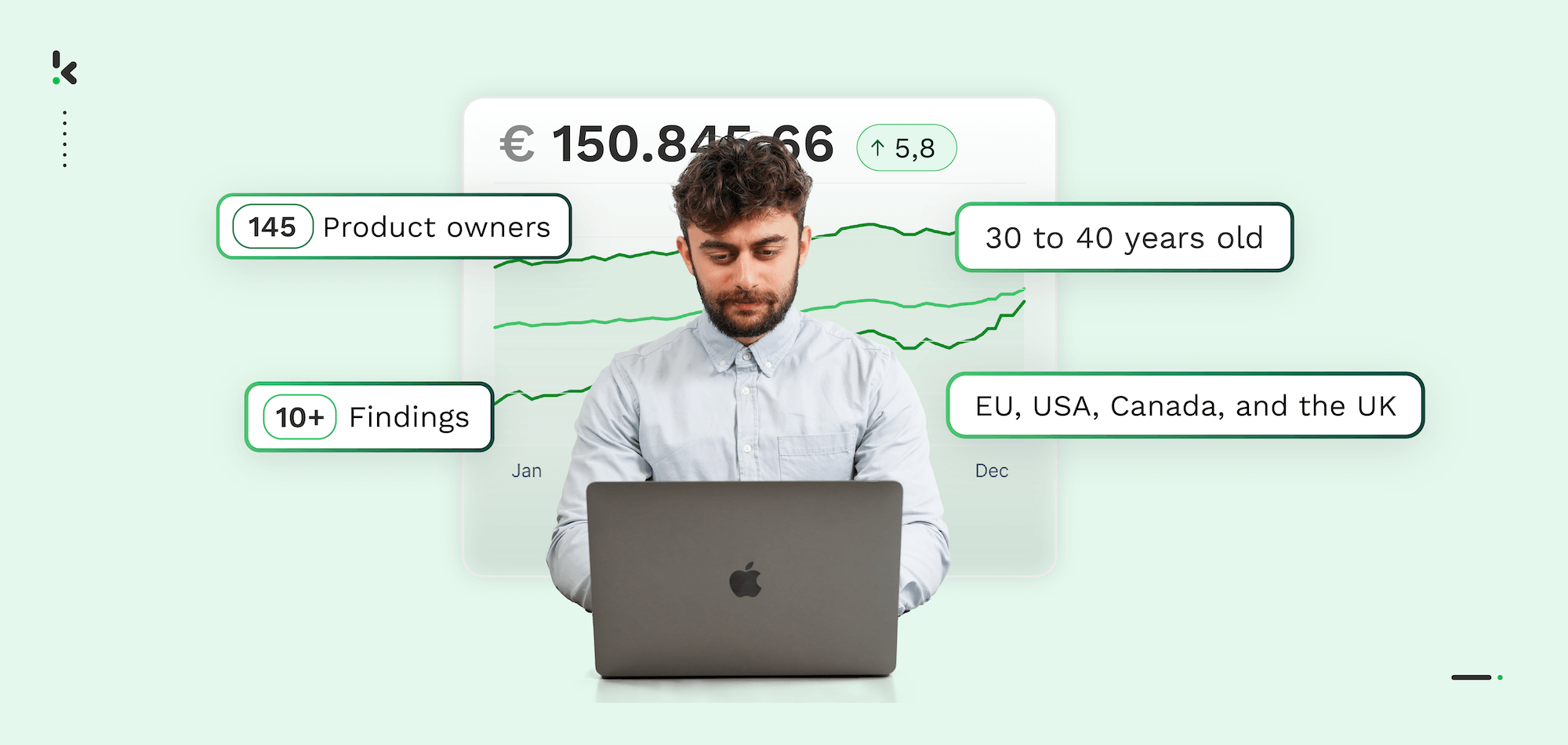

From backlog grooming to drafting strategy, product owners are experimenting with automation at every stage of their work. But what’s hype, what’s habit, and what’s really changing?
To find out, Klippa teamed up with Productowner.nl and surveyed 145 product owners from Europe, North America, and the UK. We wanted to know: How are they using AI today? Which tasks are they willing to hand over, and where do they still draw the line?
The results tell a fascinating story. Routine chores are getting automated at scale, productivity is climbing, and AI is even making its way into product vision and strategy. But trust drops fast when the stakes get higher. Very few product owners are ready to let AI handle risk management or predictive analysis.
In this article, we’ll break down the data from our research, explore regional differences, highlight the tools product owners swear by, and show why AI is becoming essential in the product management toolkit.
Report Highlights: The State of Automation in Product Management
- 60% of product owners use AI to automate repetitive tasks.
- Nearly 50% even apply AI to product vision and strategy.
- Only 18.6% trust AI with high-stakes work like risk management.
- Jira (82%), Confluence (64%), and Miro (61%) are the top tools.
- Over 75% say AI and automation make them more productive.
- 73% increased their AI use in the past year.
- 78% want more routine tasks automated.
- North American POs are most positive about AI’s impact (84%), followed by the UK (76.5%) and EU (70.3%).
Bottom line: AI is already boosting productivity and streamlining workflows, but trust fades when decisions get complex or risky.
How are product owners using AI in their daily work?
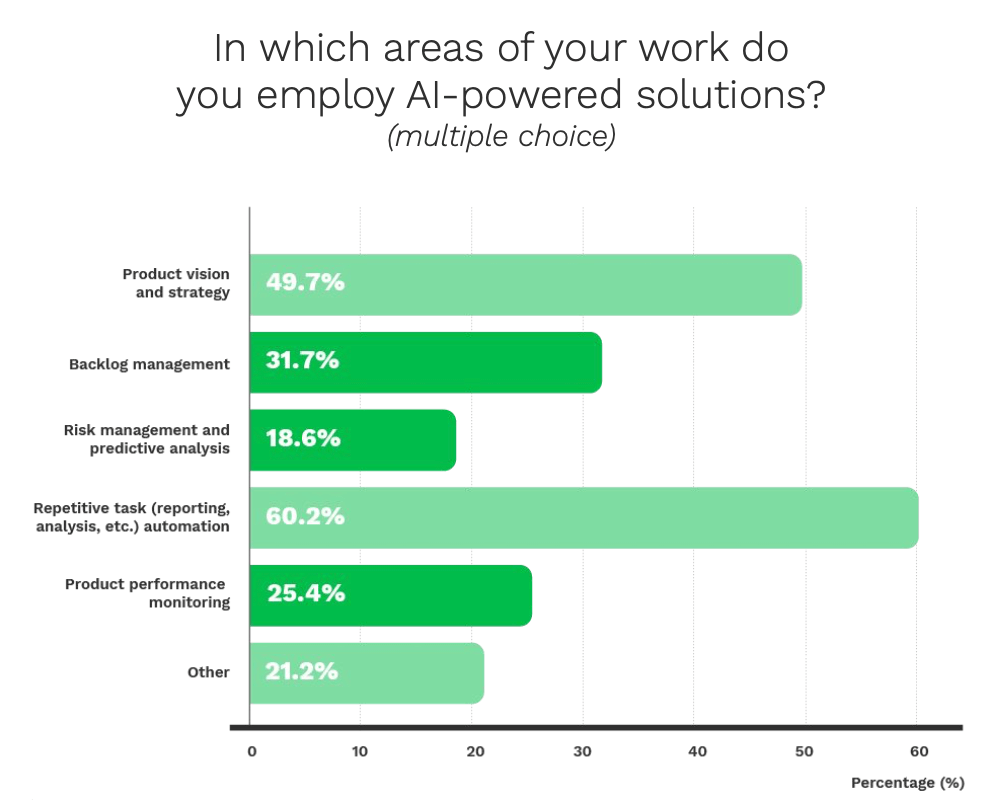

Ask any product owner what they’d gladly hand off, and the answer is clear: repetitive work. More than 60% of respondents use AI to take over routine chores — the kind of tasks that are necessary, but often boring and time-consuming.
By letting automation handle these jobs, product owners free up time for higher-value activities like strategic planning, stakeholder management, and shaping long-term product vision.
As Maarten Dalmijn, author of Driving Value with Sprint Goals, puts it:
“AI being great for repetitive tasks is nothing surprising. However, the result that half of Product Owners use AI to come up with their Product Vision and Product Strategy surprised me. This seems precisely the kind of creative and complex task you can’t offload to AI, except to maybe add some final polish.”
In other words: AI isn’t just cutting busywork. It’s already nudging its way into areas many thought too creative or complex to delegate.
Where do product owners still hesitate to trust AI?
While product owners are happy to let AI take care of the routine, trust fades quickly when the stakes rise.
- Nearly half (49.7%) say they use AI for product vision and strategy.
- But when it comes to risk management or predictive analysis, adoption plummets to just 18.6%.
- More practical areas like backlog management (31.7%) and performance monitoring (25.4%) fall somewhere in between.
This split reveals a cautious approach: product owners are willing to experiment with AI in strategy, where it can spark ideas, but they’re less inclined to hand over decisions that involve risk, accountability, or human judgment.
As Jochem Nuij, founder of Productowner.nl, warns:
“If the human side gets lost in the core tasks of a product owner, we not only lose creativity but also empathy and intuition, qualities that are essential for truly creating value for users and stakeholders.”
AI may be a helpful partner, but for now, the final call remains firmly in human hands.
How does AI adoption differ across regions?
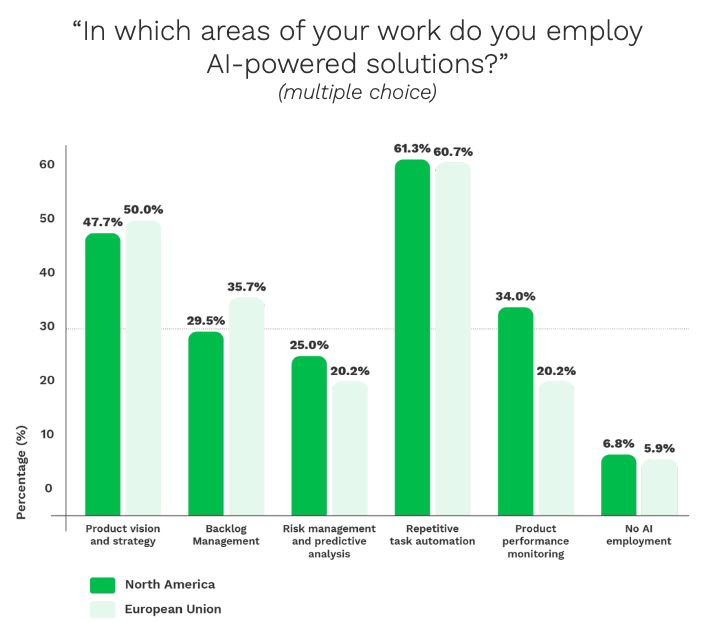

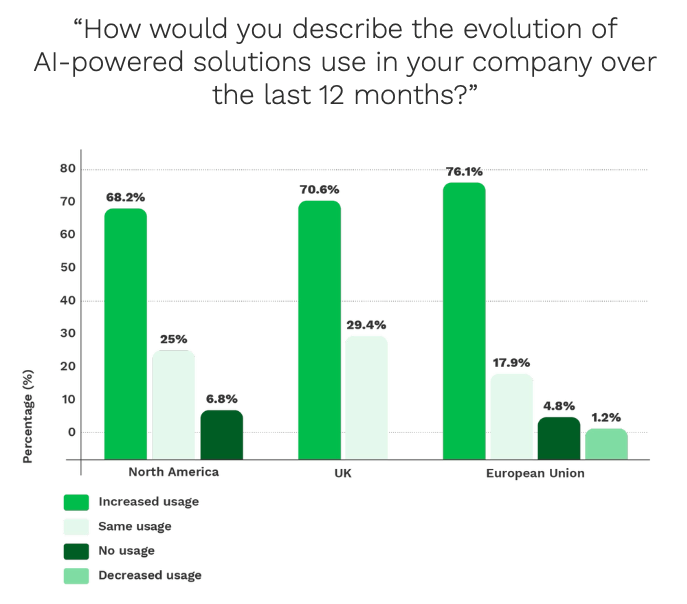

Not all product owners think about AI the same way. Regional differences show how culture and context shape adoption.
- In North America, product owners are the most positive: 84% say AI has greatly improved productivity. They lean more heavily on AI for performance monitoring (34%) than their European counterparts.
- In the European Union, the focus is slightly different. While 70.3% report positive productivity gains, they stand out for higher AI use in backlog management (35.7%). The EU is also where the only note of disagreement appeared: 2.3% of respondents said AI had not improved productivity.
- In the UK, views are largely favorable too, with 76.5% of product owners reporting positive effects. A smaller group (23.5%) remain neutral, signaling cautious optimism.
The pattern is clear: whether in the EU, UK, or North America, AI is being adopted, but the emphasis shifts depending on local priorities and workflows.
What are the most popular tools for product owners?
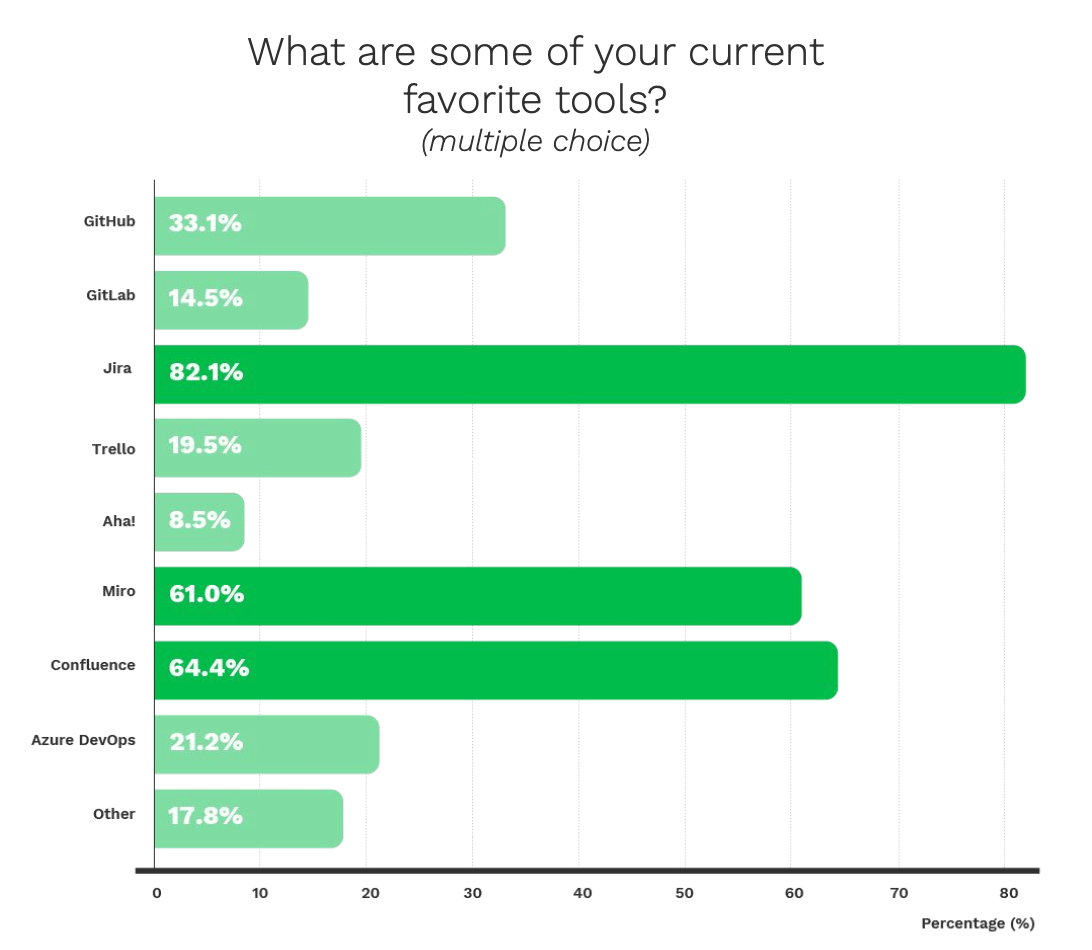

The tools product owners choose don’t just support their work; they shape how they operate.
At the top of the list is Jira, with a remarkable 82% adoption rate. It’s the go-to platform for agile project management and backlog tracking. Confluence (64%) and Miro (61%) follow closely, showing the importance of collaboration and documentation in modern product teams.
Other widely used tools include GitHub (33%), Azure DevOps (21%), and Trello (19%). When it comes to AI-powered solutions, names like ChatGPT, Claude, Perplexity, and Fireflies.ai are starting to find a place in the product owner’s toolkit.
As Jeremy D. Horn, CPO of TheProductGuy.com, explains:
“The tools we adopt define our impact. AI and automation give us the freedom to focus on strategy and innovation, but success is not just in the technology – it’s in how we use it to elevate our decision-making, streamline workflows, and ultimately deliver greater value for our users and teams.”
In short, tools matter, but it’s how product owners wield them that makes the real difference.
Does AI really make product owners more productive?
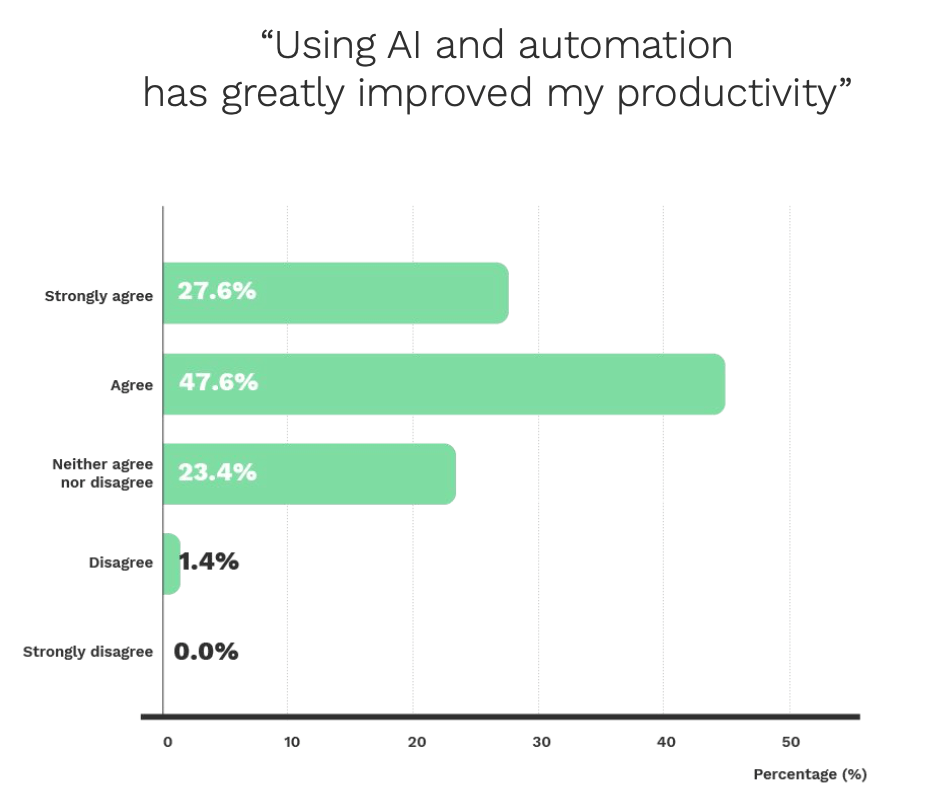

If there’s one result that stands out, it’s this: AI is making product owners more productive.
More than 75% of respondents said automation has boosted their efficiency, freeing them from repetitive tasks and allowing more focus on higher-value work. Only 1.4% disagreed — a rare sign of near-universal agreement in such a diverse group.
As Vid Nose, Global Product Owner at The Heineken Company, observed:
“More than 75% of product owners believe AI has greatly improved their productivity – that’s huge. I was not expecting such a big number. There’s a big promise in AI, and I believe we’re currently in an AI hype that’s similar to the dot-com bubble. I hope there will be no big crash, but I’m confident the best is yet to come.”
The hype may be real, but so are the results. For now, product owners overwhelmingly agree: AI isn’t slowing them down, it’s helping them get more done.
Is AI adoption among product owners still growing?
Beyond productivity, there’s another clear signal: AI adoption is growing fast.
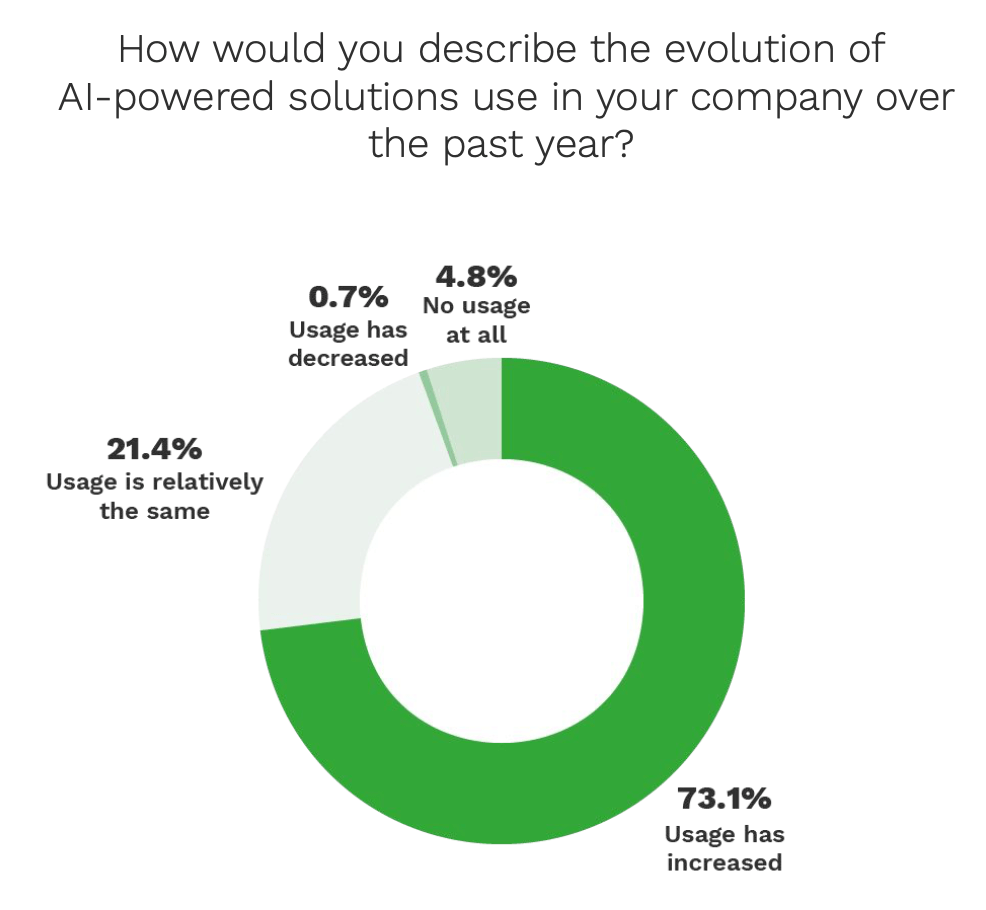

Nearly 73% of product owners reported increasing their use of AI in the past year. Only 21% said their usage stayed the same, and a tiny 0.7% admitted to using it less. Just 4.8% reported no AI use at all — proof that the technology has gone mainstream.
Regional data adds more nuance. In Europe, over three-quarters of product owners boosted their AI usage — the highest rate of growth in our study. In North America, the percentage was lower at 68%, possibly because adoption there was already high to begin with.
The message is clear: product owners aren’t just experimenting with AI anymore. They’re building it into their workflows, and usage is set to keep climbing.
Are younger product owners leading the way in AI adoption?
When it comes to AI adoption, age makes a difference.
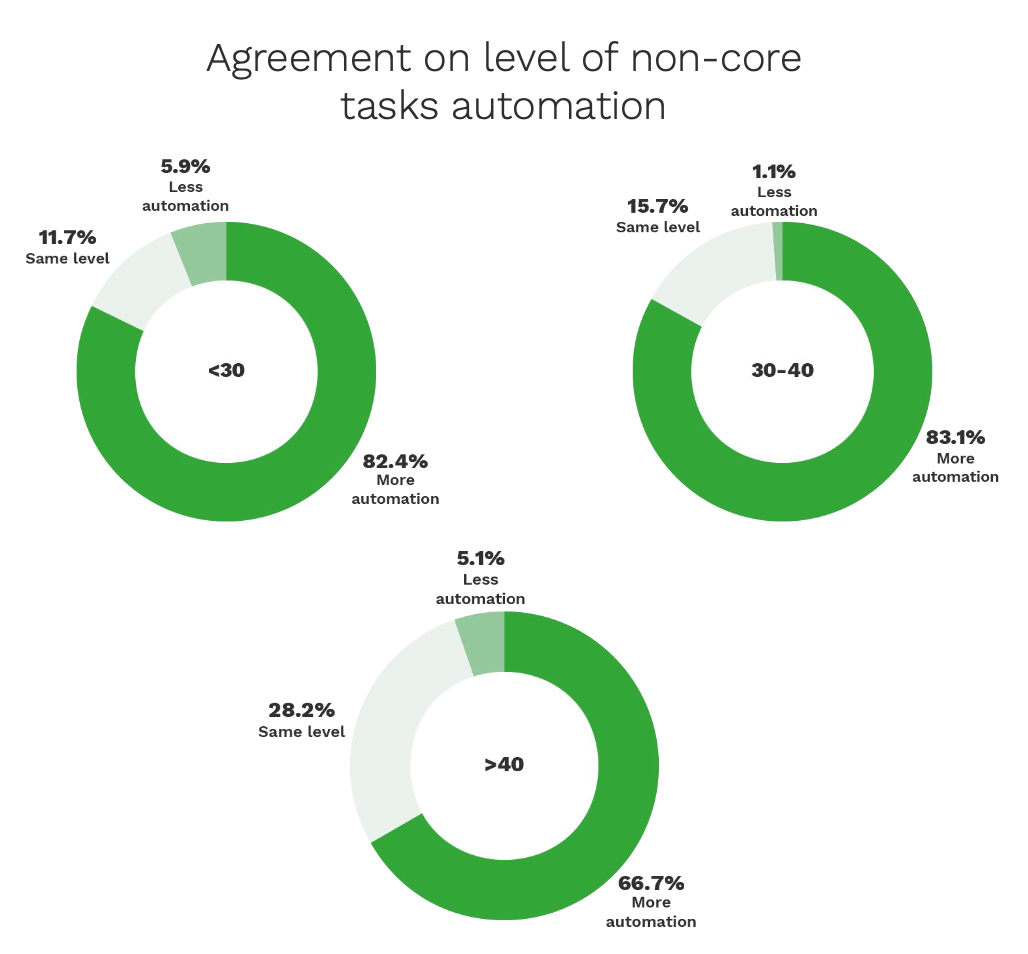

Among product owners under 30, 82% said they want more of their routine tasks automated. That number climbs slightly in the 30–40 age group (83%) and dips among those over 40 (67%).
The pattern is clear: younger product owners are more eager to let AI take over, and they’re driving the momentum for deeper automation in product management.
This generational confidence signals the future. As these younger professionals take on more senior roles, expectations around automation will shift, making AI not just an experiment, but a default part of the product owner’s toolkit.
Key takeaways for product leaders
The research shows a profession in transition. Product owners are embracing AI, but they’re also setting boundaries. Here’s what leaders should take away:
- AI thrives on routine → Repetitive tasks are being automated at scale, freeing up time for strategy and collaboration.
- Trust still has limits → Few are willing to let AI handle risk management or predictive analysis.
- Tools matter → Jira, Confluence, and Miro dominate the stack, but AI-powered tools like ChatGPT are on the rise.
- Productivity gains are real → Over 75% report positive impact, with almost no pushback.
- Adoption keeps climbing → 73% increased AI use in the past year, and the demand for more automation is strong.
- Generational change is coming → Younger POs are the most eager adopters, setting the tone for the future.
For product owners, the message is clear: AI isn’t just an add-on anymore. It’s becoming an essential part of how products are managed, and those who embrace it early will be best positioned to lead.
How Klippa can help product teams
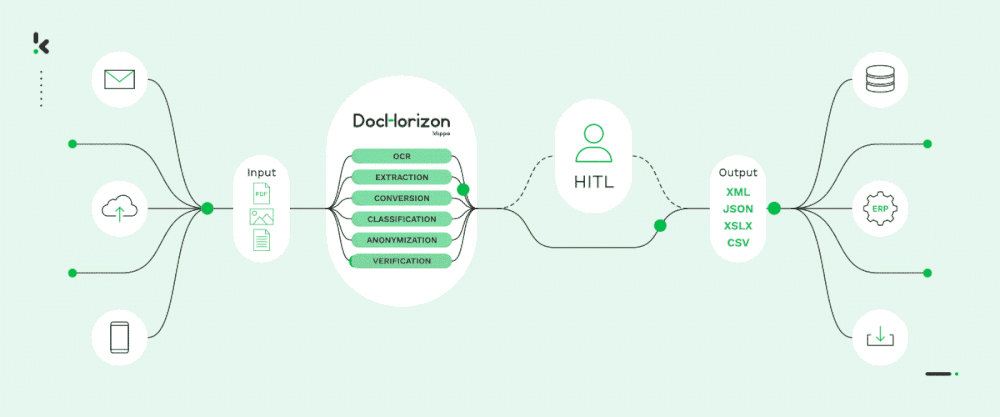

The survey makes one thing clear: product owners want to automate more. Routine tasks eat up valuable time, and while AI tools already bring big productivity gains, many teams still lack seamless, scalable solutions.
That’s where Klippa DocHorizon comes in.
With Klippa, product teams can:
- Automate repetitive workflows → free up time for strategy and user focus.
- Boost productivity → by cutting down on manual tasks that slow teams down.
- Integrate with existing tools → flexible APIs connect easily with Jira, Confluence, Miro, and more.
- Scale with confidence → whether you’re a startup or an enterprise, Klippa adapts to your workflows and compliance needs.
Book a demo with Klippa and see how automation can help your product team focus less on chores and more on building what matters.
Frequently Asked Questions About Automation in Product Management
Over 60% use AI to handle repetitive chores such as backlog grooming or admin work. These are the first tasks to be automated, freeing up time for more strategic work.
Surprisingly, nearly 50% use AI to support product vision and strategy. But trust drops sharply when it comes to high-stakes areas like risk management, where only 18.6% are willing to hand things over.
The impact is overwhelmingly positive. More than 75% report productivity gains thanks to automation, while just 1.4% disagreed.
Jira (82%), Confluence (64%), and Miro (61%) lead the way, with AI assistants like ChatGPT and Claude becoming part of the mix.
Younger professionals are driving adoption. 82% of under-30s and 83% of those aged 30–40 want more automation, compared to 67% of those over 40.
Europe shows the fastest growth, with over 75% reporting increased AI use in the past year. North America lags slightly at 68%, likely due to earlier adoption.
Klippa’s DocHorizon automates repetitive workflows, integrates seamlessly with tools like Jira and Confluence, and helps teams scale AI adoption without adding complexity.